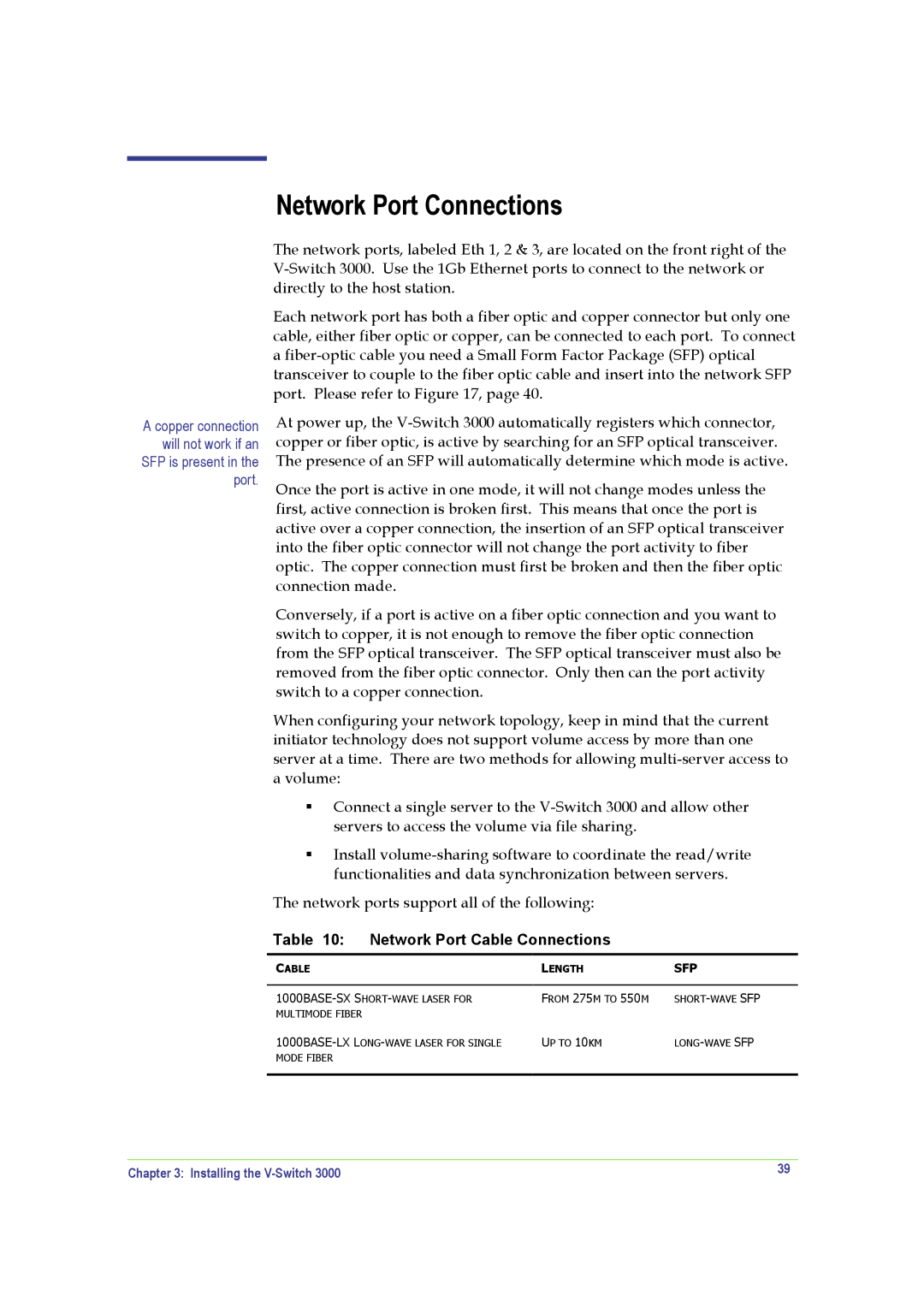A copper connection will not work if an SFP is present in the port.
Network Port Connections
The network ports, labeled Eth 1, 2 & 3, are located on the front right of the
Each network port has both a fiber optic and copper connector but only one cable, either fiber optic or copper, can be connected to each port. To connect a
At power up, the
Once the port is active in one mode, it will not change modes unless the first, active connection is broken first. This means that once the port is active over a copper connection, the insertion of an SFP optical transceiver into the fiber optic connector will not change the port activity to fiber optic. The copper connection must first be broken and then the fiber optic connection made.
Conversely, if a port is active on a fiber optic connection and you want to switch to copper, it is not enough to remove the fiber optic connection from the SFP optical transceiver. The SFP optical transceiver must also be removed from the fiber optic connector. Only then can the port activity switch to a copper connection.
When configuring your network topology, keep in mind that the current initiator technology does not support volume access by more than one server at a time. There are two methods for allowing
Connect a single server to the
Install
The network ports support all of the following:
Table 10: | Network Port Cable Connections |
| |
CABLE |
| LENGTH | SFP |
|
|
| |
| FROM 275M TO 550M | ||
MULTIMODE FIBER |
|
|
|
UP TO 10KM | |||
MODE FIBER |
|
|
|
|
|
|
|
Chapter 3: Installing the | 39 |
